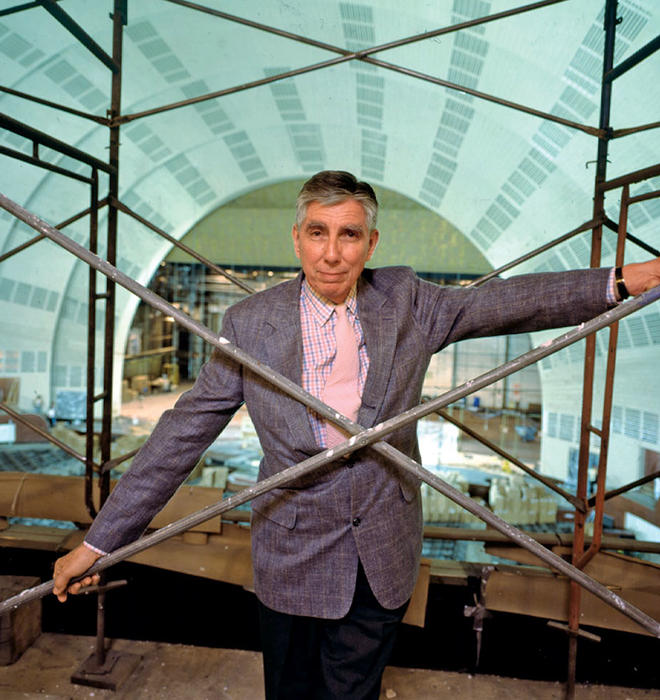
JULY 26, 1932 | MARCH 16, 2017
LAST SPRING, THEATERS ACROSS New York City dimmed their marquee lights in honor of Hugh Hardy ’54 *56, an architect who became known as the “savior” of city landmarks, and whose dramatic yet playful style left an enduring mark on New York’s skyline and in its performance spaces. Hardy died of a cerebral hemorrhage March 16 after he fell from a taxi on the way to the Joyce Theater in Manhattan, which he had helped renovate decades earlier. He was 84.
Step into one of the many buildings that Hardy designed or restored, and you can still feel his exuberance and signature joie de vivre — whether it’s the glittering art deco arches of the auditorium inside Radio City Music Hall, the bright and elaborately patterned blues and crimsons of the restored Central Synagogue in Manhattan, or the famous gingerbread information kiosk in Central Park.
“Hugh’s work manages to feel both delightfully irreverent and deeply committed to the history of the building and the city,” says Paul Goldberger, a former architecture critic for The New York Times and a professor of design at the New School. “He saw architecture as means for creating an emotional experience, and he wanted people to feel instinctively that they were in a place that was a celebration of old and new.”
Hardy was born in Majorca, Spain, but the family soon moved back to New York. He followed in his father’s footsteps by attending Princeton, where he received both a bachelor of arts in architecture and a master of fine arts degree. After graduating, he made an unorthodox choice for a young architect: He went to work for Jo Mielziner, a famous theatrical designer.
Working for Mielziner helped cement Hardy’s love of performing-arts spaces, which became a focal point of his decades-long career. A joyful person whose catchphrases “Prosper!” and “Onward!” were known fondly in the New York City design world, he made his name early in his career as an architect who was willing to move away from the austere modernism of the mid-20th century. “He wanted to get away from the glass box,” Goldberger says. “From the beginning, his work was always a little funky, a little playful, maybe a little industrial, but you always felt that it fit beautifully into the shapes and structures around it.”
Throughout his life, Hardy was dedicated to architecture and design as a form of civic engagement. At the time of his death, he was the board president of New York City’s Urban Design Forum, where he threw himself into schemes that were far beyond his own particular expertise, like a project to improve the city’s transportation infrastructure. “He really believed in New York City as an idea,” says Daniel McPhee, the executive director of the Urban Design Forum. “He wanted every space to bring people together and make them feel excited about the place where they lived.”
Amelia Thomson-DeVeaux ’11 is a freelance writer.






1 Response
Charles (Robb) Robideau ’55
7 Years Ago‘Lives Lived and Lost’
Touring with Triangle’s 1952 show, Ham ’n Legs, one of the four union stagehands who traveled on the train with us remarked that he had toured with the Metropolitan Opera and Broadway shows and that we had more stage settings and equipment than the touring company of Oklahoma!. It was all designed by Hugh to be carried in a balloon-top boxcar in one-night stands from Princeton to Chicago and cities in between.
Back in Murray and McCarter, Hugh nurtured the theatrical gift that later suffused his architecture.